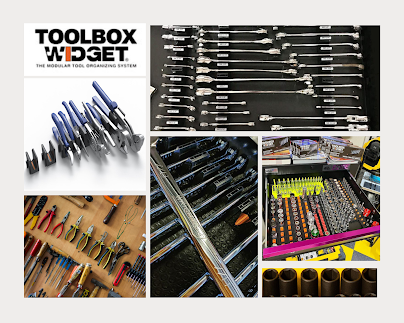Keep Your Tools in Order: A Guide to Socket and Wrench Organizers.
As any DIY enthusiast or mechanic will attest, having the right tools for the job is only half the battle. The other half is keeping those tools organized and easily accessible when needed. This is especially true for sockets and wrenches, which can easily become disorganized and lost in the chaos of a busy workshop. That's where socket and wrench organizers come in.
In this guide, we'll look at some of the different types of socket and wrench organizers available and their pros and cons. We'll also discuss some tips for choosing the right organizer for your needs and offer advice on keeping your tools in top shape.
Types of Socket and Wrench Organizers
Socket and wrench organizers come in various shapes and sizes, each with its own advantages and disadvantages. Here are some of the most popular types:
1. Socket Rails: Socket rails are simple metal rails with clips that hold sockets in place. They come in different lengths and can hold varying sockets, depending on the size of the rail. Socket rails are relatively cheap and easy to use, and they're a good choice for those who only have a few sockets to organize.
However, socket rails can be bulky and take up a lot of space, and they're not always the best option for larger socket sets. They can also be prone to rust and corrosion if not properly cared for.
2. Socket Trays: Socket trays are plastic or metal trays with sockets of various sizes molded into them. They're a good choice for those with many sockets to organize, as they can hold many sockets in a relatively small space. Socket trays are also easy to use, as you place the sockets into the appropriate slots.
However, socket trays can be more expensive than socket rails and are not as versatile. If you have a socket that doesn't fit into the tray, you'll have to find another way to organize it.
3. Magnetic Holders: Magnetic holders are small trays or bars with magnets holding sockets. They're a good choice for those who want to keep their sockets easily accessible while working, as you can attach the holder to a metal surface near your work area. Magnetic holders are versatile; you can attach them to any metal surface.
However, magnetic holders can be more expensive than socket rails and are not as portable. You must find another transport method if you need to take your sockets to a job site.
4. Wrench Racks: Wrench racks are similar to socket rails, but they're designed to hold wrenches instead of sockets. They come in different lengths and can hold a varying number of wrenches, depending on the size of the rack. Wrench racks are a good choice for those with only a few wrenches to organize.
However, like socket rails, wrench racks can be bulky and take up a lot of space, and they're not always the best option for larger wrench sets. They can also be prone to rust and corrosion if not properly cared for.
Choosing the Right Socket and Wrench Organizer
When choosing a socket and wrench organizer, there are a few things to keep in mind:
1. Size of Your Tool Set: The first thing to consider is the size of your tool set. A socket rail or wrench rack may be sufficient if you only have a few sockets or wrenches to organize. A socket tray or magnetic holder may be a better choice if you have a larger set of tools.
2. Portability: Portability is important if you need to take your tools to a job site. Socket rails and wrench racks are relatively portable, lightweight, and easy to carry. Socket trays and magnetic holders


.png)

.webp)
Comments
Post a Comment